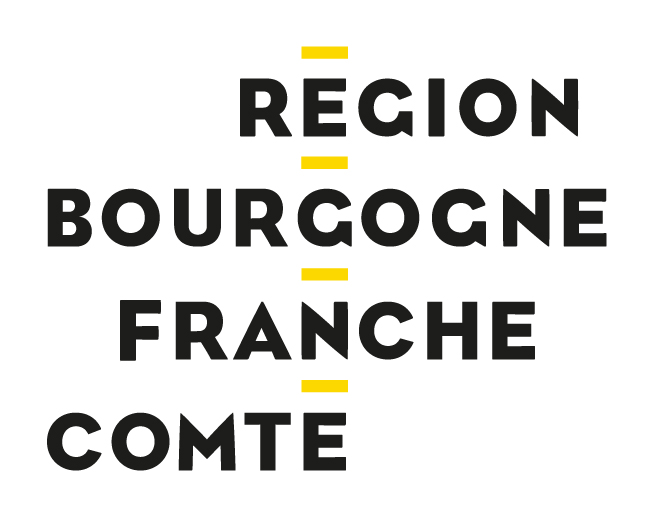08 November 2018 / The experts of the Vitagora ecosystem / Vitagora publication / Science and technologies
Preventing elderly undernutrition: concrete solutions for eating well
This article is also available in French:
 Undernutrition is a recognised pathology in the elderly. It also increases the risk of other pathologies and causes or worsens fragile conditions. The risk of undernutrition is particularly high in the elderly who are food dependent. Apart from nutritional intake, the importance of sensory pleasure for maintaining appetite and the desire to eat must not be dismissed. The goal of the RENESSENS project was to learn what is important about food for the elderly in order to develop customised and relevant solutions.
Undernutrition is a recognised pathology in the elderly. It also increases the risk of other pathologies and causes or worsens fragile conditions. The risk of undernutrition is particularly high in the elderly who are food dependent. Apart from nutritional intake, the importance of sensory pleasure for maintaining appetite and the desire to eat must not be dismissed. The goal of the RENESSENS project was to learn what is important about food for the elderly in order to develop customised and relevant solutions.
Why this should interest you
- Dependent elderly people are in danger of undernutrition wherever they live: at home, in an institution or in hospital.
- Learning why appetite diminishes in the elderly is essential to providing better support systems for the dependent.
- Developing food supplies adapted to the elderly population’s nutritional needs, preferences and capacities (such as appetite and chewing) is vital to prevent undernutrition.
- Taste and flavour are more important than appearance or presentation to elderly people.
The elderly often lose weight due to appetite loss and lower food intake, increasing the risk of undernutrition. A recognised pathology in the elderly, undernutrition is insufficient nutritional intake. Consequences include muscle loss and deterioration of the body’s immune defences. If unchecked, undernutrition increases the risk of falls, fractures, disease and hospitalisation. It causes or worsens fragility and dependence, in turn affecting quality of life and life expectancy.
When the elderly suffer from physical difficulties such as reduced mobility, osteoarthritis, cognitive impairment such as Alzheimer’s, or social isolation due to widowhood for example, they can become dependent on other people for certain daily activities, including their food. Multiple studies show that the risk of undernutrition is particularly high in dependent elderly people. According to the French health authority, 4% to 10% of seniors living at home suffer from undernutrition, but the figure increases to 15% to 38% of seniors living in care homes, and to 70% in hospitals.
Without assuming a causal link between dependence and undernutrition, prevention of undernutrition must be a focus when caring for dependent seniors. Help with shopping, meal deliveries, institutional catering... How can we improve systems so that the elderly eat tasty food that is good for them - in other words, meeting nutritional needs and providing pleasure.
Claire Sulmont-Rossé, INRAE research director at the Centre for Taste and Food Sciences, recaps the important results from the RENESSENS research project and provides new insights into what elderly people need and expect of food.
Claire Sulmont-Rossé
A tasteful career
Claire Sulmont-Rossé received a PhD in Food Sciences from the University of Burgundy in 2000. After a post-doctoral internship in psychology at the University of Texas, Dallas,, she joined INRAE as a research manager until 2014 when she became research director. She is part of the "Development and dynamics of food preferences and behaviour" team at the Centre for Food and Taste Sciences (CSGA) in Dijon.
She began by concentrating on the cognitive mechanisms (memory and learning) underlying food activities, including odour memory. She is now focusing most of her research on factors that affect eating for the elderly, and to developing actions that combine nutrition and eating pleasure to prevent and combat undernutrition.
Centre for Taste and Food Sciences (CSGA)
Founded in 2010, the CSGA is a joint research unit bringing together researchers of AgroSup Dijon, CNRS, INRA and the University of Burgundy. The range of expertise in the CSGA covers flavour, sensory perception and food behaviour. A particularly interdisciplinary unit, the CSGA focuses on the impact of food on well-being and health. Team members include experts in physico-chemistry, physiology, neurobiology, sensory evaluation, ethology and psychology..
Sensory experience
It makes sense
"The interaction between our sensory systems and food is fundamental," Claire explains. “We perceive the sensory properties of food and drinks with the five senses: smell, taste, sight, touch - and even hearing.” To study the sensory values of food, we need to understand how sensory signals are recognised and processed by the brain, and then how they contribute to the development of our preferences and aversions.
The elderly - a fully-fledged consumer segment
Eating well is key to aging well. But eating well is not just satisfying the body’s nutritional needs. Claire reminds us, "Eating well is also about sensory pleasure which generates appetite and well-being. To this end the elderly must be seen as a full-fledged consumer, with sensory experiences and expectations, preferences and aversions.”

The ANR RENESSENS project
How to adapt food to the needs and preferences of seniors
The goal of the RENESSENS* project, conducted by Dijon university hospital, is to develop customised dietary solutions for dependent elderly (*Réussir Ecologiquement une Nutrition Equilibrée et Sensoriellement adaptée pour SENiorS or Succeed Ecologically Balanced Nutrition Adapted to Seniors). Participants in the project, which spanned 4 years from 2013 to 2018, included Dijon and Clermont-Ferrand university hospitals, INRAE, Ecole Supérieure de l’Agriculture of Angers, Université de Lyon III, companies such as EC6, Saveur et Vie, SENES, SCINNOV, Robot Coupe and FSI, Université de Tours et Université de Lille, ONIRIS, Sciences et Cuisine, Centre Hospitalier de Liège, VIVALIA, Fromageries BEL, Fédération Hospitalière de France and Pôle de Gérontologie Interrégional Bourgogne & Franche-Comté.
One of the first objectives of the project was to identify eating profiles in the dependent elderly population. An extensive survey was conducted among more than 300 seniors and food surveys were conducted in several establishments with senior populations. "We observed that the nutritional needs of nearly 90% of seniors in retirement homes were not met. Age and dependence lead to a decrease in appetite and food intake, in particular protein-rich foods such as meat and fish. We tried to understand why," Claire says.
Using these results, strategies were adapted for each profile: food plans, menus, textured and/or enriched foods, etc. A pilot study was then carried out in voluntary structures to evaluate the cost and benefits. What was the impact on the senior's nutritional conditions, status, health and quality of life? What was the labour cost to the establishment for training, reorganising the kitchen and/or service? What was the impact on food waste? Are the solutions sustainable?
What is most important to the elderly?
Tasty food with good flavour!
As part of the RENESSENS project, a panel of 319 elderly people dependent for their food (on a housekeeper, meal deliveries or care homes) ranked proposals about their food expectations.
Results showed that 88% of them believed it is important to eat tasty food with good flavour. "Taste is even more important than appearance," Claire says. “Only 11% of respondents considered the appearance of food or the presentation of a dish to be more important than its taste, and 14% considered them to be equally important.”
Easy to chew
The survey also found that 60% of participants prefer food that is easy to chew. Elderly people frequently suffer from oral disorders, such as lost teeth and saliva reduction which alters the way food is broken down and bolus formation. Poor oral health means older people avoid food that is difficult to chew such as meat and raw fruit and vegetables. To prevent deficiencies, food and dishes must be developed to adapt to their chewing capacity, which results in all their food being chopped, blended and mashed... which they don’t like.
Learning to love food again
"Work by sociologist Philippe Cardon and anthropologist Emmanuel Soutremon showed that the kitchen was perceived as a "black box" by care-home residents. When they delegate all or part of their diet, they are distanced from it and no longer feel involved, which contributes to loss of appetite. Our next project is to develop more comprehensive actions that go beyond the sensory and nutritional content. The aim is to get the elderly involved in their meals again," adds Claire.
“Until now, our research has focused on the elderly living in institutions, but we plan to work more on fragile elderly people living at home. We particularly want to develop approaches that help caregivers – family and healthcare professionals – to prevent appetite loss and undernutrition among the elderly. Developing food that meets the sensory expectations, dietary preferences, and habits of the elderly is essential to maintaining the pleasure and desire to eat. But we must recognise that it’s not possible without involving the elderly themselves," Claire concludes.
Keywords
Diet, undernutrition, elderly, aging, dependence, sensory, taste, flavour, pleasure
|
Go further...To find out more about developing food solutions for the elderly or the expertise of the CSGA, contact Elodie da Silva: elodie.dasilva@vitagora.com
A food engineer from the French city of Toulouse, Elodie leads the "Innovation & Ecosystem" team of Vitagora in providing support for agrifood business innovation goals, with enthusiasm, professionalism and confidentiality. |
Further reading
- Divert C, Laghmaoui R, Crema C, Issanchou S, Van Wymelbeke V, Sulmont-Rossé C (2015). Improving meal context in nursing homes. Impact of four strategies on food intake and meal pleasure. Appetite, 84, 139–147.
- Sulmont-Rossé C, Maître I, Amand M, Symoneaux R, Van Wymelbeke V, Caumon E, Tavarès J & Issanchou S (2015). Evidence for different patterns of chemosensory Alterations in the elderly. Chemical Sense, 40, 153–164.
- Sulmont-Rossé C, Van Wymelbeke V, Maître I (2016). Perception des odeurs et préférences alimentaires chez la population âgée : quel impact sur la prise alimentaire et le statut nutritionnel ? Nutritions & Endocrinologie, 14, 92-95.
- Sulmont-Rossé C, Van Wymelbeke V, Maître I (2016). Le plaisir à manger en EHPAD : point de vue du senior consommateur. In Hugol-Gential C (ed), Se Nourrir ou Manger ? Les Enjeux du Repas en Etablissement de Santé (pp. 73-92). L’Harmattan, Paris, France.
- Van Wymelbeke V, Sulmont-Rossé C, Maître I (2016). De l’indépendance à la dépendance, que se passe-t-il lors du vieillissement. In Hugol-Gential C (ed), Se Nourrir ou Manger ? Les Enjeux du Repas en Etablissement de Santé (pp. 93-113). L’Harmattan, Paris, France.
- Sulmont-Rossé C, Symoneaux R, Feyen V, Maître I (2018). Improving food sensory quality with and for elderly consumers. In Ares G, Varela Tomasco PA (eds), Methods in Consumer Research Volume 2: Alternative Approaches and Special Applications (pp 355-372). Elsevier. Cambridge, USA.
- Vandenberghe-Descamps M, Labouré H, Septier C, Feron G, Sulmont-Rossé C (2018). Oral comfort: a new concept to understand elderly people’s expectations in terms of food sensory characteristics. Food Quality and Preference, 70, 57-67.
- Vandenberghe-Descamps M, Sulmont-Rossé C, Septier C, Follot C, Feron G, Labouré H (2018). Impact of blade tenderization, marinade and cooking temperature on oral comfort when eating meat in an elderly population. Meat Science, 145, 86-93.




 Home
Home



















